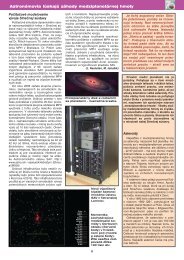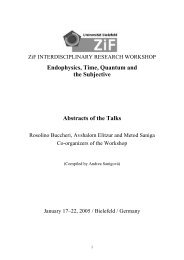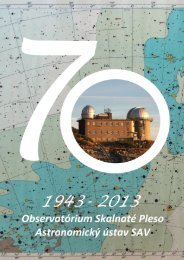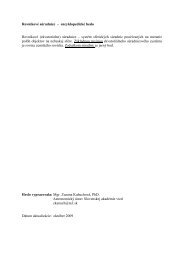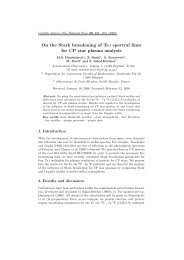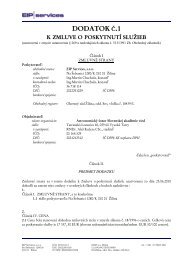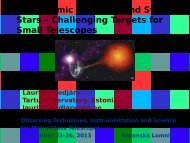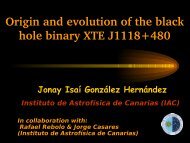A New Method for Comparing Numerical Simulations with ...
A New Method for Comparing Numerical Simulations with ...
A New Method for Comparing Numerical Simulations with ...
You also want an ePaper? Increase the reach of your titles
YUMPU automatically turns print PDFs into web optimized ePapers that Google loves.
<strong>Method</strong> <strong>for</strong> <strong>Comparing</strong> <strong>Simulations</strong> <strong>with</strong> Observations 81CONTINUUM INTENSITY DISTRIBUTIONFWHM DISTRIBUTION1.0001.0000.1000.100Synthetic spectra0.010Synthetic spectra0.0100.0011.0000.0011.000Synthetic spectra + PSF + slit + IPSynthetic spectra + PSF + slit + IP0.1000.1000.0100.0100.0010.6 0.8 1.0 1.2 1.4NORMALIZED CONTINUUM INTENSITY I c0.0010.5 1.0 1.5 2.0 2.5 3.0NORMALIZED FWHMFigure 3. Distributions of the continuum intensity (left column) and the linewidth (right column) <strong>for</strong> all individual snapshots from the original simulationdata (top row) and <strong>for</strong> the same data degraded <strong>for</strong> all effects including thePSF, the slit width, detector pixel sampling, and the estimated instrumentalprofile of the VTT echelle spectrograph (bottom row).and above 1.4. The distributions are still asymmetric and significant variationsbetween individual distributions are present.A comparison of the average distributions of the normalized FWHM comingfrom OBSs and from degraded SIMs <strong>for</strong> µ=0.65 is given in Figure 4. Both distributionsshow similar asymmetry but the distribution from the SIMs is broader.The difference is more pronounced <strong>for</strong> the tail of large values (∼20 %). Forchecking purposes, we have calculated a similar distribution <strong>for</strong> the continuumintensity (Figure 4). It advises that the PSF might be still a bit underestimatedas the distribution of the SIMs is still broader than that of the OBSs. Thesepreliminary results demonstrate the possible usage of this method <strong>for</strong> statisticalcomparison of high-resolution spectroscopic observations <strong>with</strong> synthetic dataobtained from numerical simulations.Acknowledgments. The VTT is operated by the Kiepenheuer-Institut fürSonnenphysik, Freiburg, at the Observatorio del Teide. This research is part of



